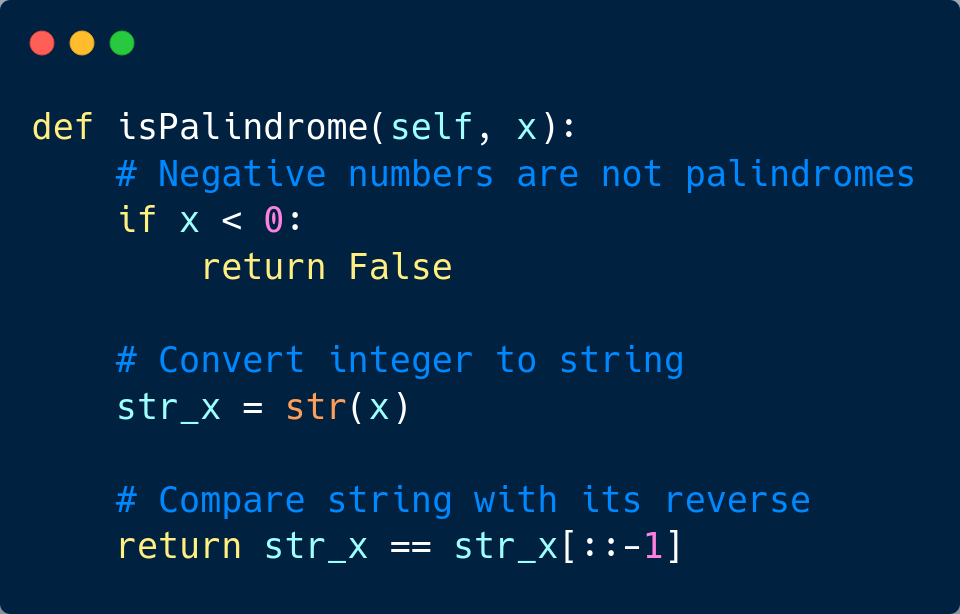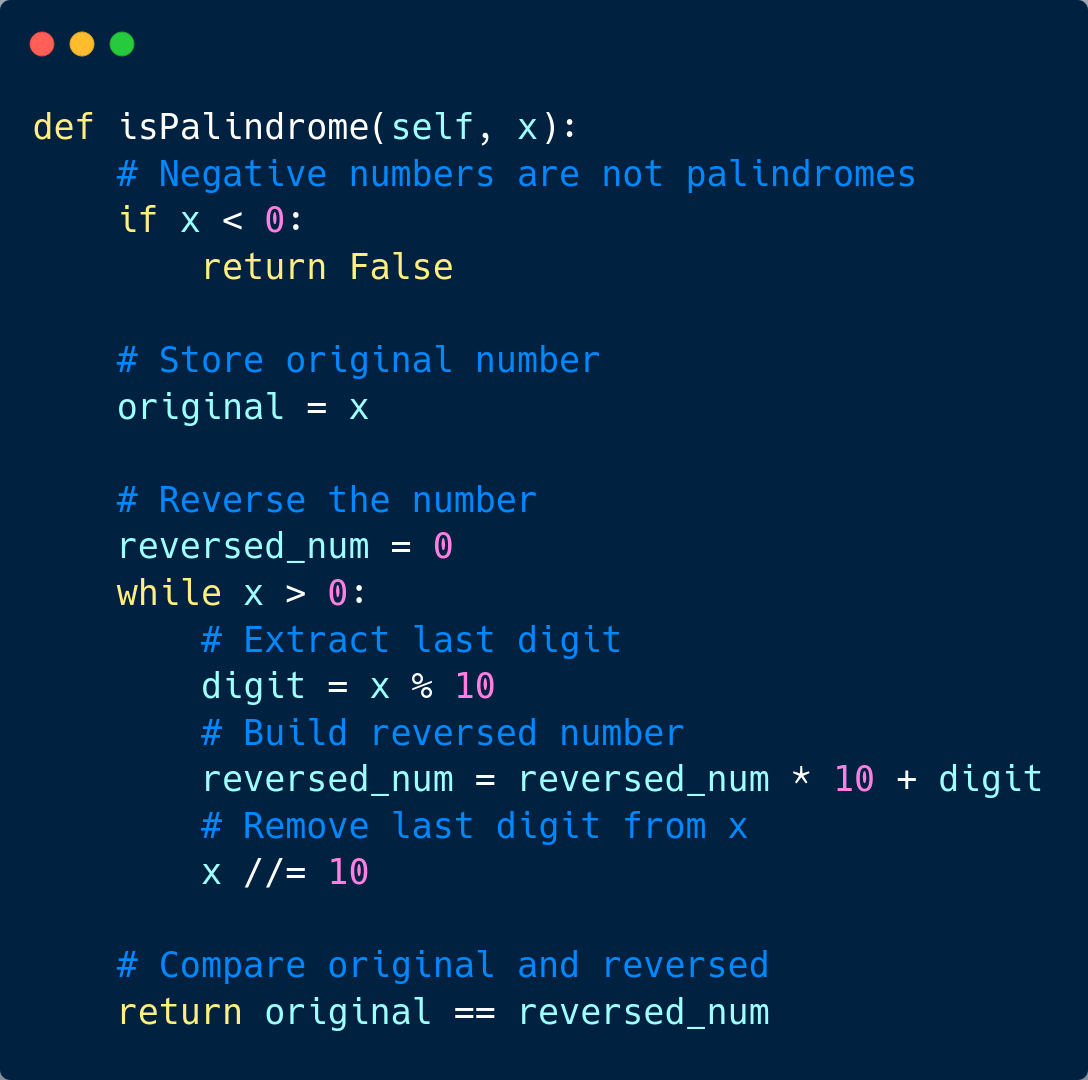- InstaByte
- Posts
- The mother of all layoffs started
The mother of all layoffs started
ALSO: Handling Large File Uploads
Welcome back!
This week’s coding challenge can be solved in two ways. But most people can only think of one solution. Let’s see if you get both.
Today we will cover:
Palindrome Number
Handling Large File Uploads
Read time: under 4 minutes
CODING CHALLENGE
Palindrome Number
Given an integer x, return true if x is a palindrome, and false otherwise.
Example 1:
Input: x = 121
Output: true
Explanation: 121 reads as 121 from left to right and from right to left.Example 2:
Input: x = -121
Output: false
Explanation: From left to right, it reads -121. From right to left, it becomes 121-. Therefore it is not a palindrome.Example 3:
Input: x = 10
Output: false
Explanation: Reads 01 from right to left. Therefore it is not a palindrome.Solve the problem here before reading the solution.
PRESENTED BY MINIMAX
MiniMax-M2: Open-Source LLM for the Agentic Era
MiniMax just released MiniMax-M2, a model built for max coding & agentic workflows.
It’s compact, fast, and cost-effective (230B total, 10B active parameters), delivering elite coding and agentic performance while maintaining powerful general intelligence.
SOLUTION
To solve the palindrome integer problem, we'll convert the integer to a string and compare it with its reverse. This approach is straightforward and efficient.
By converting the number to a string, we can easily check if it reads the same forwards and backwards. Negative numbers are not palindromes because of the minus sign.
The time complexity of this solution is O(n), where n is the number of digits in the input integer. The space complexity is also O(n) as we create a string representation of the number.

For a follow-up solution without string conversion, we can reverse the number mathematically:

This mathematical approach has O(log x) time complexity and O(1) space complexity, as we're only using a few variables to reverse the number digit by digit.
HEARD OF PROTON?
Free, private email that puts your privacy first
Proton Mail’s free plan keeps your inbox private and secure—no ads, no data mining. Built by privacy experts, it gives you real protection with no strings attached.
SYSTEM DESIGN
Handling Large File Uploads

Uploading large files directly to a web server can cause timeouts and slow down your application. Let's look at how to handle large file uploads efficiently.
The simplest approach is to upload files directly to your web server. But this has several problems. Large files consume server memory and CPU, making your application less responsive. If the upload fails midway, you have to start over. Additionally, storing files on web servers makes scaling difficult.
A better solution is to use a dedicated object storage service like Amazon S3 or Google Cloud Storage. Instead of uploading files to your web server, clients upload directly to the storage service. This approach has several benefits:
Your web servers stay lightweight and responsive
Storage services are optimized for handling large files
You get built-in scalability and redundancy
But uploading large files to storage services can still fail. To handle this, we can use multipart uploads. Here's how it works:
Split the large file into smaller chunks
Upload each chunk separately
When all chunks are uploaded, combine them on the storage service
This approach has several advantages:
Failed uploads can resume from the last successful chunk
Multiple chunks can upload in parallel, improving speed
Memory usage stays low since we're handling smaller pieces
Here's a comparison of different upload approaches:
Approach | Pros | Cons |
|---|---|---|
Direct Upload | Simple to Implement | High server load, no resume |
Storage Service | Better Scalability | More Complex setup |
Multipart Upload | Resume support, faster | Most complex to implement |
FEATURED COURSES
5 Courses of the Week
✅ IBM AI Engineering Certificate: Master LLMs, transformers, and NLP. Build AI apps using BERT, GPT, LLaMA. Includes hands-on projects using LangChain and RAG.
✅ Meta Front-End Developer Certificate: Master web development skills by learning HTML5, CSS, JavaScript, and industry-standard design tools like Bootstrap and React. You'll complete multiple projects and a final capstone project.
✅ Amazon Developer with genAI Certificate: Learn software development fundamentals with Java programming, data structures, and full-stack web development through real-world projects and a capstone challenge.
✅ Google Cloud Developer Certificate: Teaches cloud-native application design and maintenance through hands-on Google Cloud labs. Provides real-world experience with Google Cloud technologies for the Cloud Developer role.
✅ Stanford’s Machine Learning Specialization: Master fundamental AI concepts and develop practical machine learning skills in the beginner-friendly, 3-course program by AI visionary Andrew Ng
AI TOOLING
Choose the Right AI Tools
With thousands of AI tools available, how do you know which ones are worth your money? Subscribe to Mindstream and get our expert guide comparing 40+ popular AI tools. Discover which free options rival paid versions and when upgrading is essential. Stop overspending on tools you don't need and find the perfect AI stack for your workflow.
NEWS
This Week in the Tech World

Amazon Cuts 14,000 Jobs: Amazon confirms corporate layoffs affecting HR, AWS, and devices as CEO Jassy streamlines operations with AI automation. 14,000 already laid off, 16,000 more coming.
Microsoft-OpenAI Restructure Complete: Microsoft gets 27% stake in OpenAI's for-profit entity worth $135B. Partnership extended through 2032.
Anthropic-Google Seal Massive Deal: Anthropic secures access to 1M+ Google TPUs and 1+ gigawatt of compute power by 2026 in multibillion-dollar agreement.
$20K Home Robot Raises Privacy Concerns: 1X Technologies unveils Neo humanoid robot for $20K. Remote VR control feature sparks debate over home privacy.
Nvidia Blackwell Chips in Arizona: Nvidia's Blackwell AI chips are now in full production in Arizona, marking a historic shift from Taiwan-based manufacturing to US soil.
Meta Builds $27B AI Data Center: Meta and Blue Owl Capital partner on largest AI-focused data center to support next-gen models and metaverse experiences.
Meta Cuts 600 AI Jobs: Meta laid off approximately 600 employees across its AI infrastructure units. The cuts affected software engineers, AI researchers, and data scientists.
GitHub Deprecates Copilot Models: GitHub removed Claude Sonnet 3.7, Claude Opus 4, GPT-4, and Gemini 2.0 Flash from Copilot, forcing developers to migrate workflows immediately.
BONUS
Just for laughs 😏

HELP US
👋 Hi there! We are on a mission to provide as much value as possible for free. If you want this newsletter to remain free, please help us grow by referring your friends:
📌 Share your referral link on LinkedIn or directly with your friends.
📌 Check your referrals status here.
YOUR FEEDBACK
What did you think of this week's email?Your feedback helps us create better emails for you! |
Until next time, take care! 🚀
Cheers,



